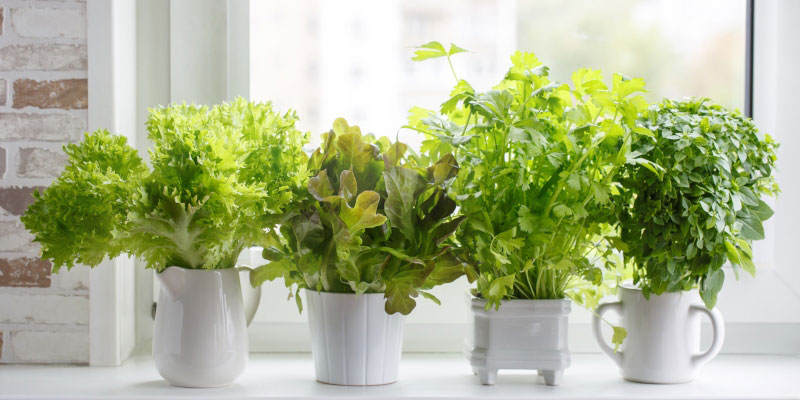There are a lot of great benefits to being a senior, but you may be dismayed when your mobility decreases. Retirement can also have you searching for hobbies to fill the time that don’t require an abundance of energy or time. While traditionally gardening is a task that requires a lot of both, container gardening is a way to enjoy nature that won’t take as much out of you.
What is Container Gardening?
Container gardening is, as the name implies, gardening that happens in containers rather than in the ground. A container can be anything that holds soil and plants, from traditional pots to repurposed basins and tubs. Almost any plant can be gardened in a container, even some types of small trees.
If you have little or no outdoor space, then container gardening has the extra bonus of not needing a lot of room. A few window planters or pots on a balcony can give you that garden you wanted without needing a lot of yard.
You can also container garden indoors, with smaller pots on windowsills or raised on tables in a mudroom or sunroom. Containers at different heights can add even more dimension and layers to your garden.
Why Seniors?
So why is container gardening a good idea for seniors? For starters, you don’t have to be a natural gardener or someone with lots of experience to begin. Container gardening is great for a new hobby, and it doesn’t cost much to get started.
In addition, the containers you choose to garden in can be raised so you don’t have to bend down and stand up like you do with traditional gardening. If you have additional handicaps or are in a wheelchair, you can find raised planters that come to a level that you are comfortable with.
Even if you are a fairly mobile senior, container gardening can be an exercise that helps you avoid spending long periods of time out in the heat. A slight raise up from ground level can also be a big help for your back, and container gardens are easier to move and manipulate than a garden in the ground.
Picking Containers
While containers can come in any size, from small, egg-sized pots for small succulents to huge planters for bushes, it’s easier to garden in something that has a bit of room for your plants to grow. Because it’s an enclosed space, roots will only grow as big as the container allows, so a larger pot gives your plants more room.
Examples of containers you can use include:
- Hanging baskets
- Plastic pots
- Metal planters
- Planters with added trellises
- Wash tubs
- Clustered pots
- Wicker baskets
- Bowls
- Terra cotta pots
- Hollow concrete squares
All of these types of containers can also be raised if they don’t already come with a stand to get them off the ground and closer to you.
Prepping Your Container
Once you have a container— or several— picked out, it’s time to start considering the logistics. Move your container to where you want it to be before you start to fill it with dirt, which will quickly add weight to your container.
Another detail to consider is the drainage of your container. All containers should have a draining system like holes in the bottom— unless it is a cachepot. A cachepot is a decorative pot that a smaller, plain pot with drainage rests inside of. A cachepot should not be used as a regular container because without drainage you plant’s roots can get waterlogged.
Containers also use a different kind of dirt than a regular garden. Ground gardening soil is too heavy for plants in containers, so a lighter soil mix like houseplant soil will provide better results. You also want to make sure that the water, once it drains through the soil, doesn’t flow or fall on anything that could be water damaged. A tray or flat plate to collect water can be a big help if your container doesn’t come with one.
Deciding on Plants
Vegetables
- Tomatoes
- Broccoli
- Peppers
- Cabbage
- Squash
Herbs
- Chives
- Parsley
- Basil
- Mint
- Lemongrass
- Garlic
Annual flowers
- Geraniums
- Marigolds
- Dwarf dahlias
- Bluemink
- African daisies
- Black-eyed susans
- Heliotrope
Perennials
- Hostas
- Ferns
- Lavender
- Daylilies
- Echinacea
- Primroses
- Carnations
- Foxglove
Final Thoughts
Here are some final tips about container gardening for seniors:
- Keep the soil in your container damp. Drying the dirt out makes it difficult to re-wet and stay moist.
- Have quality pruning and gardening tools so you don’t strain yourself.
- Regularly fertilize the containers to give plants extra nutrients.
- Keep an eye on your allergies, and avoid plants that are going to make you sneeze.
- Clear out dead leaves or flowers that might be detracting from the overall look of your garden.
- Keep an eye on how much sun and shade your containers get— you may need to adjust what plants you pick to find something that can thrive in different light conditions.
- Play around with plant arrangements to find something that you like.
- Enjoy yourself!





